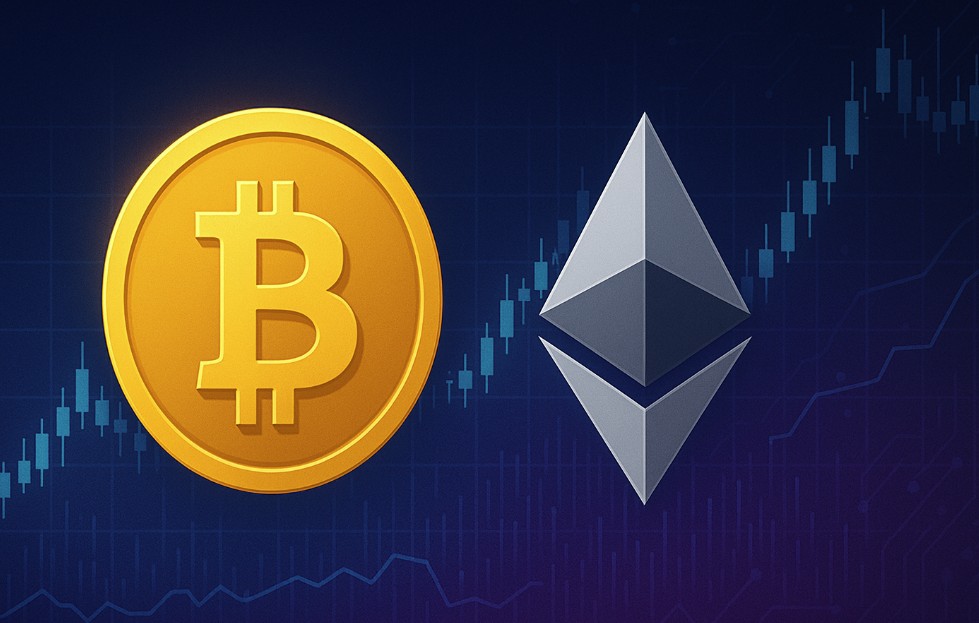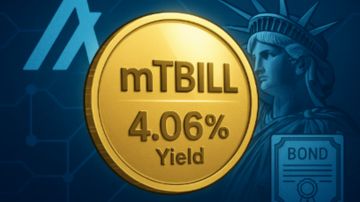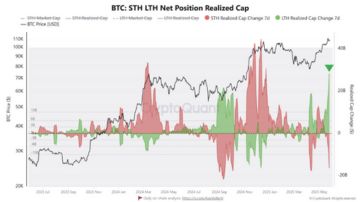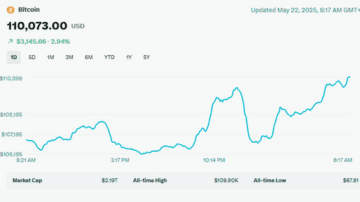
For those who have participated in the decentralized market, they will definitely know Maple Finance (MPL). Many long-standing names are focusing on the credit sector in the lending transaction segment.
And Maple is a new project with many development goals in that area. If you are curious and want to know how Maple actually works and what is special about this project? Let’s follow the article below!
What is Maple Finance?
Maple Finance is an institutional capital marketplace powered by blockchain technology. On a mission to redefine capital markets through digital assets, Maple expands the digital economy by providing undercollateralized lending for institutional borrowers and fixed-income opportunities for lenders. By building a decentralized capital market on the blockchain, Maple strives to harness global capital and apply it to the areas of greatest opportunity. Since its launch in May 2021, the Maple protocol has sourced over $72M USDC in institutional credit liquidity and continues to scale, upsizing existing lending pools and establishing new pools for diversity.
Maple uses a ‘ peer-to-pool ‘ design with loans funded by Liquidity Pools giving investors access to a diverse pool of institutionalized, high-performing loans.
What is the difference of Maple?
First of all, people need to understand that there are two popular types of loans today: unsecured loans and collateralized loans.
An unsecured loan is a form of loan where you borrow money based on the reputation of yourself or an organization. For example: Your company takes a bank loan based on its reputation in the market, revenue reports, products of the existing company, etc.
>>> Related: Predicting the future of the cryptocurrency market
Meanwhile, a mortgage is a form of loan where you borrow money based on the assets put into collateral. For example, if you want to borrow a business loan, you must mortgage a house and bring all the real estate documents to the bank to keep for risk prevention.
Re-mortgage loans are divided into two types: over-collateralized (borrowing an amount less than the value of the collateral) and under-collateralized (borrowing an amount more than the collateral).
Maple Finance ‘s purpose is to expand under-collateralized lending to its potential customers in a decentralized manner.
Members participating in Maple
Sidney Powell (CEO and Co-Founder): Has more than 3 years of experience working in the national bank of Australia. After that, he moved to work as a financial manager at the famous Angle Fiance company and has a lot of experience in banking and finance. This is a great advantage for him and his associates to develop Maple Finance later.
Joe Flanagan (Co-Founder): From 2016-2019, he was the CFO at Axsesstoday-Australia. Since 2019 He holds the position of CEO of Clover Advisory. He is a person with a lot of experience in the field of finance and credit
James Duncan (Product manager): Also the Co-founder of Abridged company – a company also active in the field of Blockchain technology, James was also a person working in the financial field for many years before joining Maple. product development.
Liquidity Providers (LPs): Are those who provide liquidity, or roughly understand, contribute capital to the Pool. These men pool money together to lend and receive interest when the loan is paid off.
Pool Delegates: Are the representatives of Pool. These guys will evaluate, review the organizations and funds above, see the loan terms and decide whether or not to grant the loan.
Institutional Borrower: It can be understood as financial institutions and investment funds that have the need to use capital and have the ability to borrow capital under the organization’s reputation through the institution’s reputation.
Stakers: Those who provide insurance for the Pool. Sort of, each pool will be insured by locking a certain amount of assets into Pool staking. When the loan defaults, there is a risk of liquidation, the part of the assets in this staking pool will be liquidated first after the collateral has been fully liquidated. In return, these stakers will receive % interest when the loan ends.


Investors
Maple Finance raised $1.3 million in seed round
Investment funds participating in the seed round are famous names in the field of crypto investment including Cluster Capital, Framework Ventures, Alameda Research, FBG Ventures, One Block Capital, The LAO, Bitscale Capital…

Maple protocol overview
There are 4 main types of users in the Maple protocol
- Liquidity Providers – Those who provide liquidity to the Pool to earn fixed interest (based on the borrower’s terms) as well as any associated MPL mining rewards.
- Pool Delegates – Trusted Asset Manager who launches and manages loan pools. Responsible for the operation of the Liquidity Pool.
- Borrowers – Organizations looking for working capital. Borrowers include hedge funds, exchanges, centralized lenders, cryptocurrency miners, etc.
- Stakers – People who provide pool insurance by placing tokens in shared lockout contracts. These tokens will be liquidated first by default. Joint stock companies receive a percentage of the interest earned on the pool from borrowers..

Steps to launch and lend on Maple
- Maple Governance approves the Pool Delegate.
- Authorization to create profiles and operational strategies.
- Authorization to deploy and initiate loan funds.
- Authorize Pool activation by staking into the Pool a minimum amount of MPL and USDC.
- Lenders (LPs) review each Pool’s operational strategy.
- Lenders (LPs) review representative profiles, select and add liquidity to their desired Pools
- The borrower creates a borrower profile and details the loan terms.
- The Pool Delegate will review the borrower’s requests and conduct their own due diligence on the terms directly with the borrower.
- After the terms are agreed, the borrower initiates the loan agreement
- The Pool Delegate will finance the loan contract with the liquidity of the Pool it manages.
- Borrowers take out a loan and deposit a certain amount of collateral in one transaction. The establishment fee is taken from the withdrawal and sent to the representative and sent to the Maple DAO Treasury
- The borrower pays interest according to the set repayment cycle and repays the principal with the final repayment at maturity
- Pool Delegate claims interest on behalf of the pool for the duration of the loan term and claims principal with final repayment at maturity
- Agents, Lenders and Managers can all claim benefits available throughout the process
Fees on Maple
There are 2 types of fees on Maple, including:
| Establishment Fees | Ongoing Fees | |
| Define | The fee paid by the borrower when performing loan appraisal and loan disbursement | Fees are paid for managing each Liquidity Pool during the borrowing process, pre-set by the Pool Delegate when creating the Liquidity Pool, calculated as a % of the profit received. |
| Recipients | ● Pool Delegate● Liquidity Providers● Strikers● Maple DAO Treasury (will later be divided among MPL Holders) | ● Pool Delegate● Liquidity Providers● Strikers |
How to make profit with Maple
From the above fee table, there will be 3 ways for you to make money from Maple:
– Provide liquidity: Users can participate in providing liquidity to pools to earn a fixed interest rate using the pool’s liquid assets. This fixed interest rate is determined by terms set forth by the group agent and the borrower. In addition, participants providing liquidity can earn additional MPL from liquidity mining in a few select pools.
– Stake Pool Cover: Maple will reward users who stake in locker contracts. The assets in this locker contract will be a reserve, always at risk of being liquidated to protect the LPs in default conditions. Staking participants will earn 1% of the interest generated by the borrowers.
– Become a Pool Delegate: Become a Pool Delegate, represent the Pool to appraise, approve loans and manage the pool, thereby receiving fees back.
MPL Token
MPL is an ERC-20 token on Ethereum of the Maple protocol. The total supply of MPL is 10 million tokens, with 3 main features: governance, staking, share in network fees, specifically:
MPL holders can vote on changes to the protocol, including proposals for adjusting fees, minting or burning MPL, and other proposals related to the operation of the protocol. In particular, MPL holders have the right to vote on the distribution of fees accumulated in the Maple DAO Treasury.
MPL holders will also earn a portion of the fees that Borrowers pays for Maple Protocol. All Maple holders receive a share of the Establishment Fees that are accumulated into the Maple DAO Treasury. In addition, holders can receive additional Ongoing Fees when participating in staking.
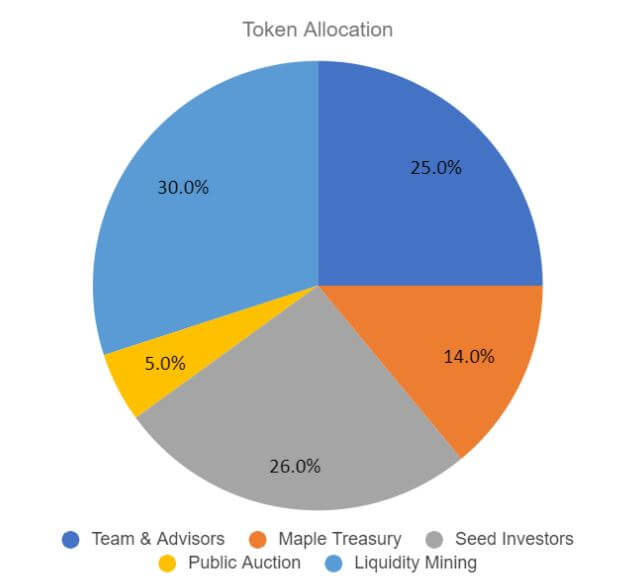
A total of 10,000,000 MPL will be allocated as follows:
- Maple Treasury: 14% – 1.400.000 MPL
- Seed Investors: 26% – 2.600.000 MPL
- Public Auction: 5% – 500.000 MPL
- Liquidity Mining: 30% – 3.000.000 MPL
- Team & Advisors: 25% – 2.500.000 MPL
MPL Token has the following applications
- System Administration: MPL Holders can submit and vote on proposed changes to the protocol, including fee adjustments, minting or burning MPL tokens, and other changes. If MPL holders do not wish to participate in governance themselves, they will have the option to delegate their voting rights.
- Staking Liquidity Pools: MPL token holders can default their tokens to the Liquidity Pool – thus earning a portion of the Fees from the activities taking place in this liquidity pool.
- Network Fees: MPL holders can earn a portion of fees as Borrowers and liquidity providers pay for the Maple protocol. All Maple Token holders can earn a portion of the fees and are distributed periodically.
Development speed
Currently, I only see 1 Liquidity Pool of Orthogonal Trading on Maple with a total Pool value of 37.2 million USDC, of which Cash Balance (the amount that has been deposited and ready to lend) is 20.2 million.
According to some information that I read, Maple’s first loan was started with a value of 17 million USD with the borrowers Alameda Research, Wintermute and Amber Group.
Where to buy Maple token?
Up to now, Maple is present on major exchanges such as: Balaner and Uniswap .
Will Maple revolutionize the global financial system?
Maple Finance sees a problem in the general desire for overcollaterization. It believes that this leaves important economic actors unable to benefit from funds. Instead, it focuses on Pool Delegates to mitigate loans, and this undercollaterization ideally speeds up loans, gets funds to the right people, and provides lenders with a hefty yield.
If all of these pieces are in place, Maple believes that they can be used across the board when it comes to the board in the financial sector, from real estate to the credit card industry. The appetite for undercollateralized loans from institutional borrowers has proven significant, leading to Maple registering its first profitable quarter. Is there more to follow? And, can regular crypto users profit from staking MPL? Time will tell.
Comment
It can be seen that Maple’s main operating model currently revolves around lending under collateral . All of the profits that the protocol makes include Establishment Fees and Ongoing Fees. Thus, for the project to develop, more organizations are required to borrow funds at Maple, thereby increasing the fees collected and bringing greater benefits to Delegates, LPs, stakers & holders. . Only when this condition occurs will the demand to buy and hold MPL tokens increase and the token can increase in price .
Currently, I see that the demand for loans is not high, the number of participating pools on Maple only has 1 pool. Therefore, to confirm whether the market really needs a product like this in the near future, it is necessary to continue monitoring. In return, a positive point is that the first pool has attracted a large amount of deposits (20.2 million USDC), showing that many people are still interested in how to make money through Maple.
Maple’s mechanism of action is actually quite similar to a “special bank”. Users will deposit money, Maple brings that money to lend via its protocol (Delegates are bank appraisers, approve loans), interest will be divided among parties. The Maple mechanism has minimized risks for users by pushing the risk to another Pool Staking, in return stakers will receive more rewards. However, at present, loan approval is still heavily dependent on Delegates (filtered by MPL Holder through governance). Therefore, in my opinion, the decentralization in this protocol is still relatively limited.
However, I slightly disagree about the reward mechanism for Delegates . Delegates are loan appraisers, so if Delegates are rewarded for initial appraisal and approval of the valve package (Establishment Fees), it is not reasonable, because Delegates can be greedy to approve many loans. loans even if they are not qualified. It is like a man holding investment funds of small investors but receiving fees from investment projects. In my opinion, to be more reasonable, Delegates will receive Establishment Fees when the loan is paid off.
Through the above analysis, I feel that the buying force for MPL tokens is still not much , specifically, holding & staking MPL has not brought attractive enough profits. Personally, I will put Maple Finance on the watchlist and monitor the future development of the project.
Conclusion
Maple Finance is a loan marketplace powered by Blockchain technology. With a mission to redefine the borrowing market through digital assets, Maple expands its platform by providing transparent and efficient financing loans made on its platform . For lenders, Maple provides a sustainable source of profit through lending to diverse groups of organizations, companies, and funds related to the cryptocurrency sector. The strong development in this potential customer segment will promote the development of the Maple platform in the future.

